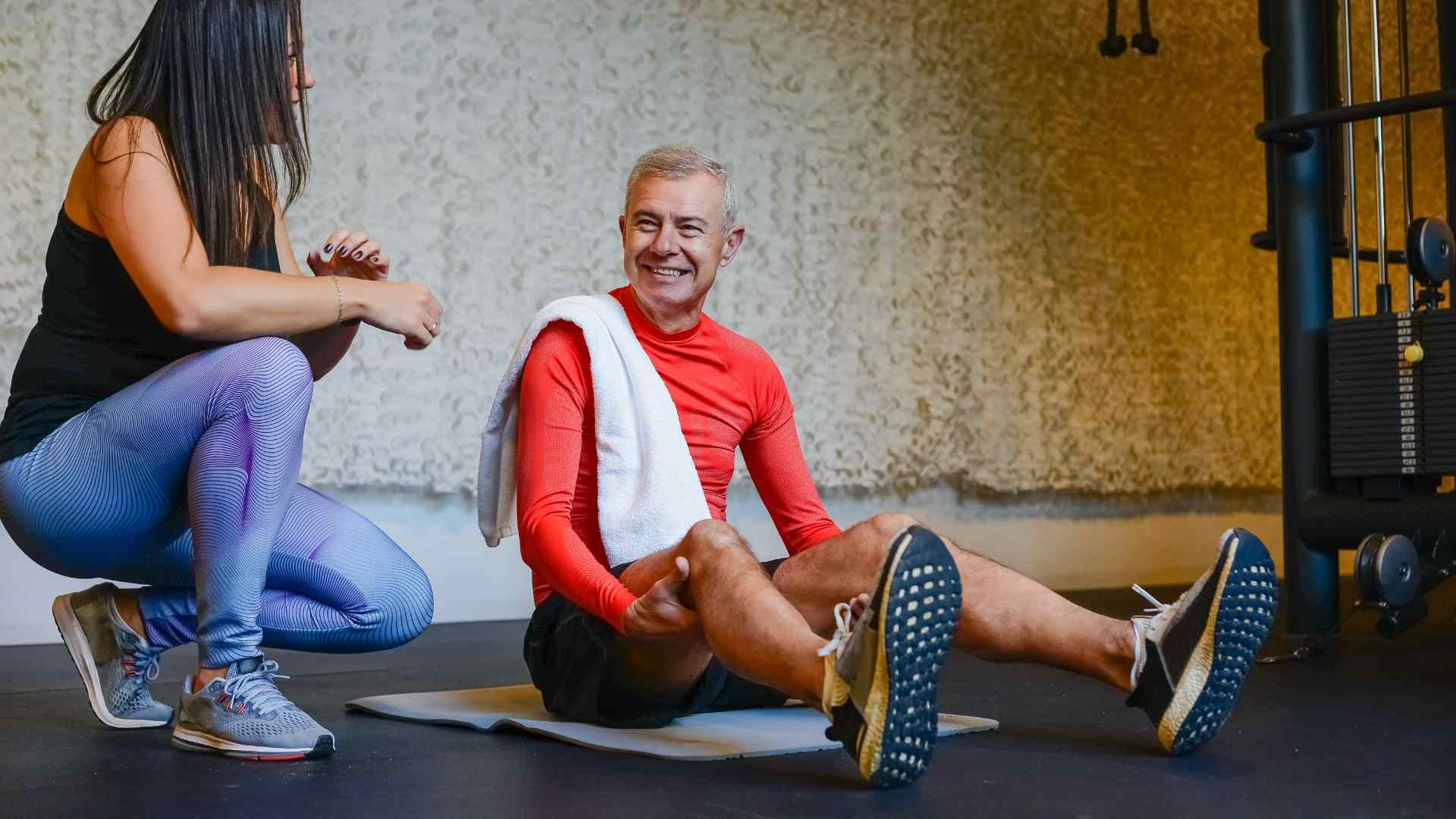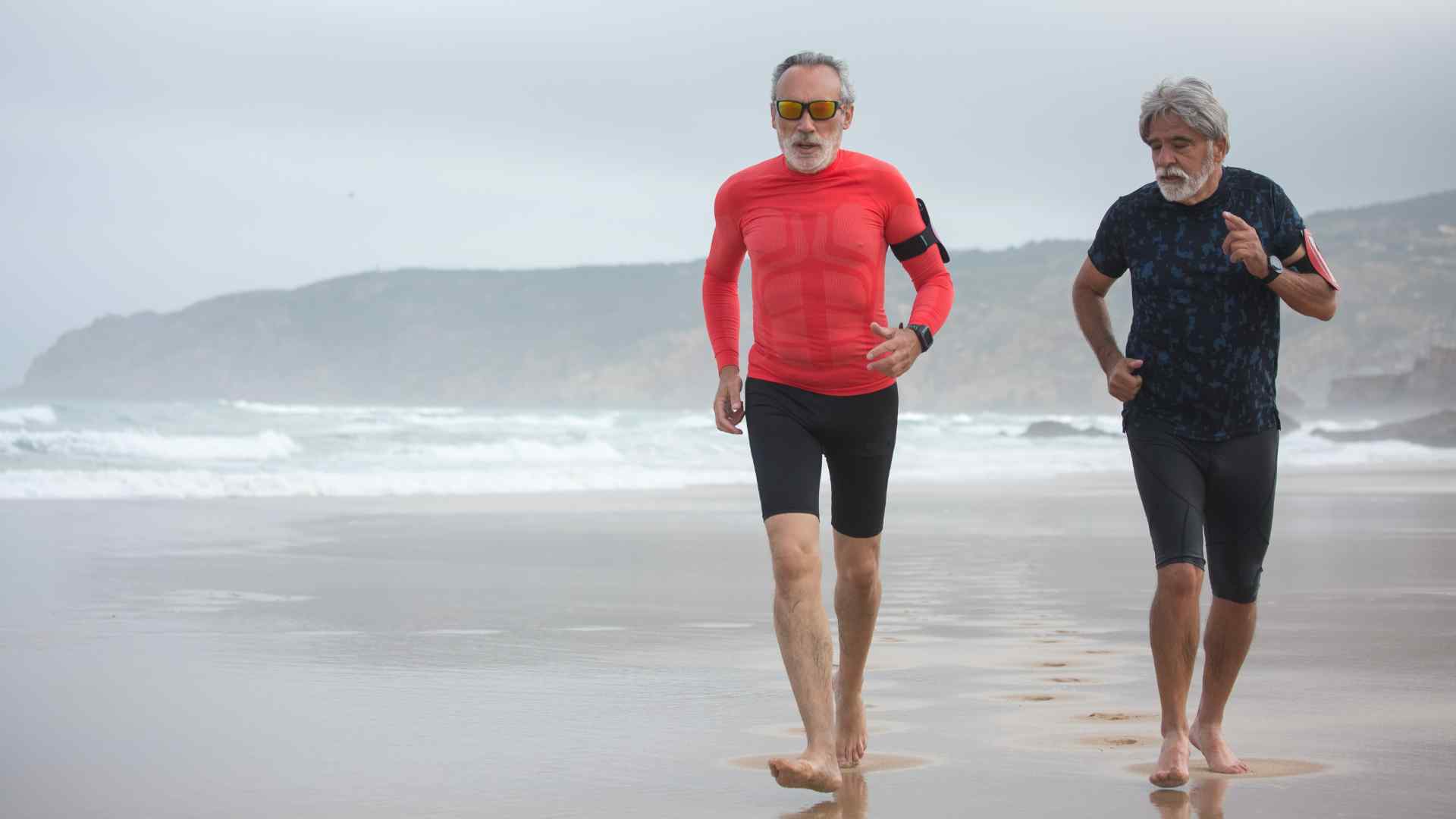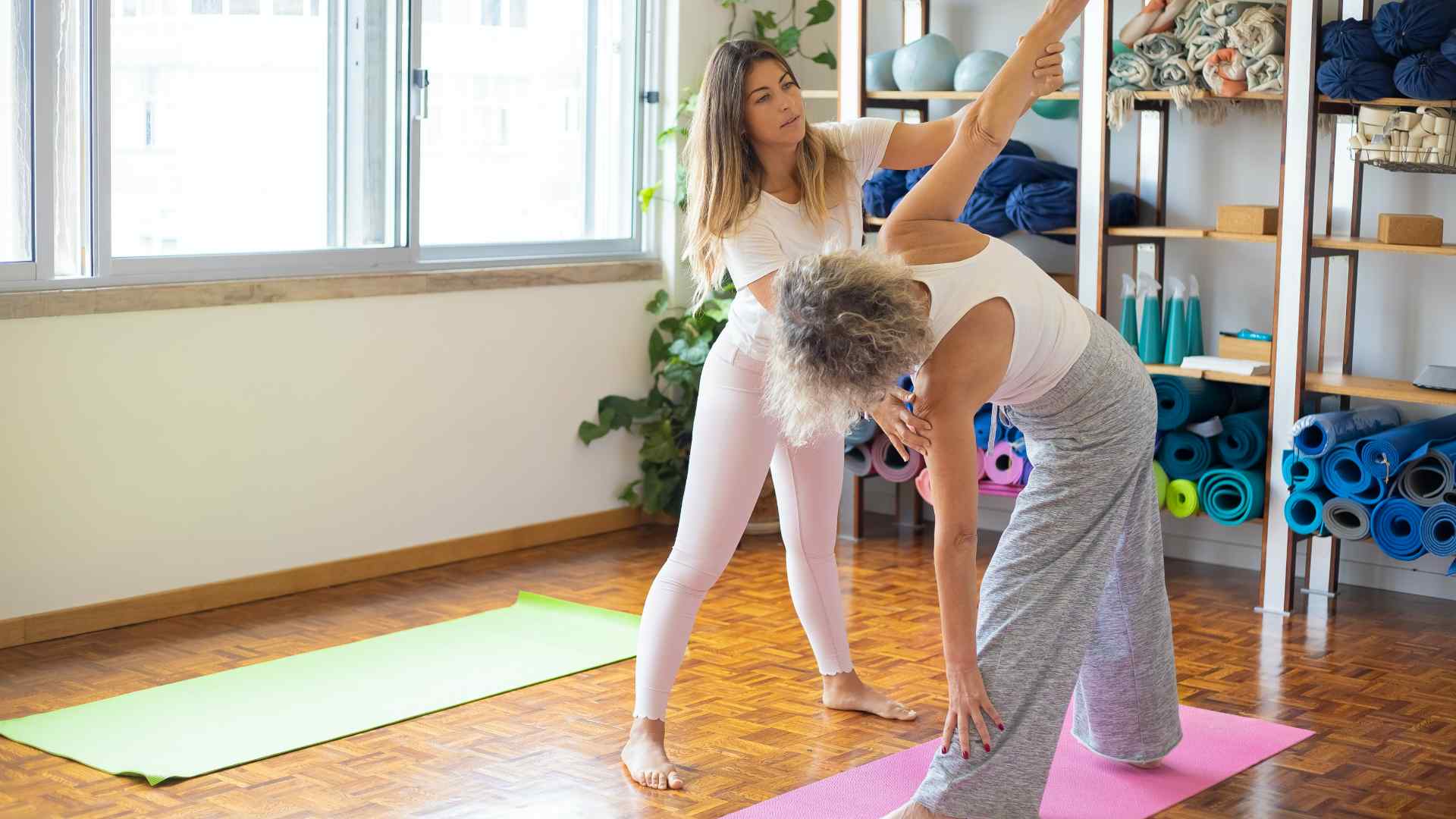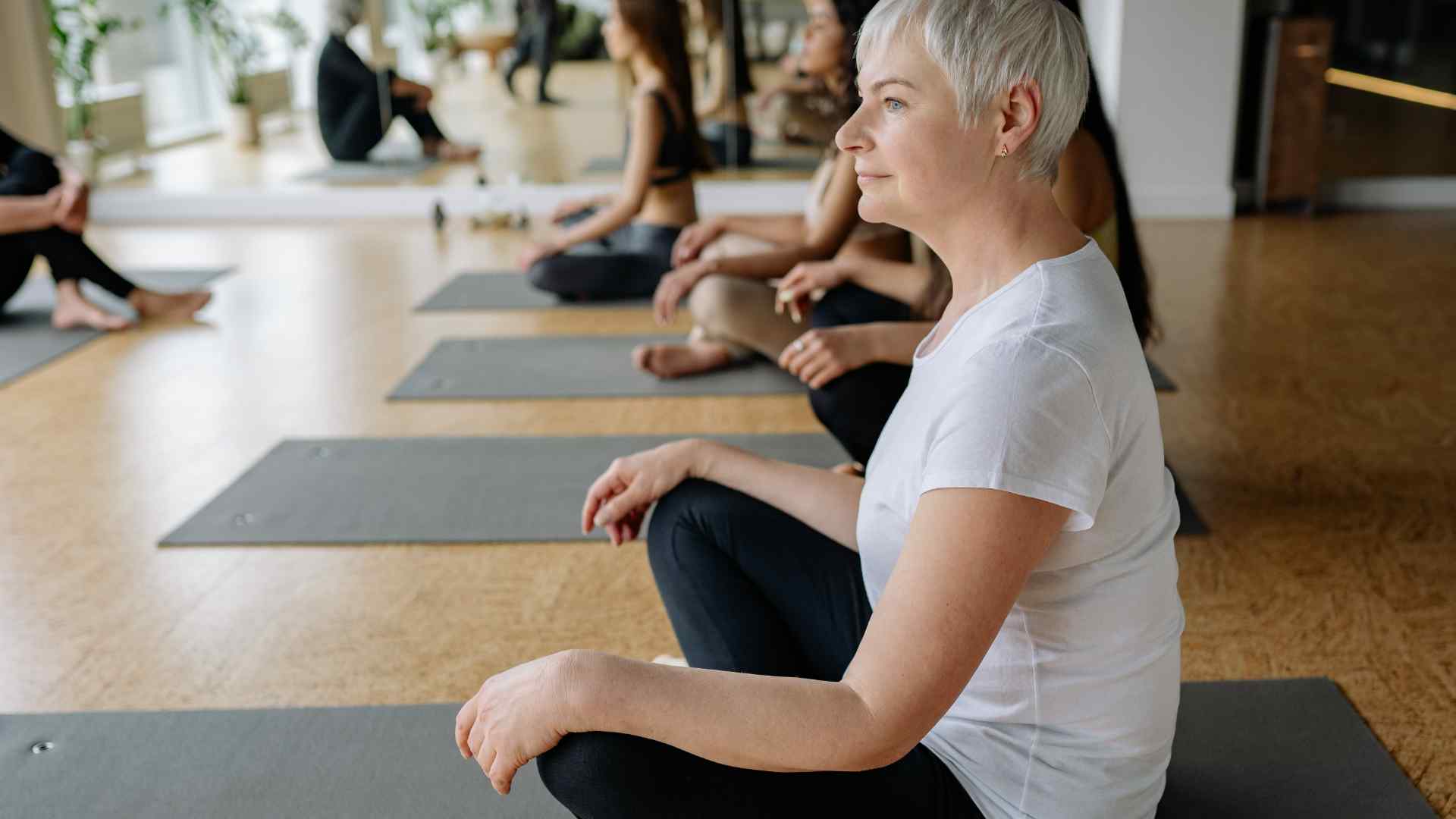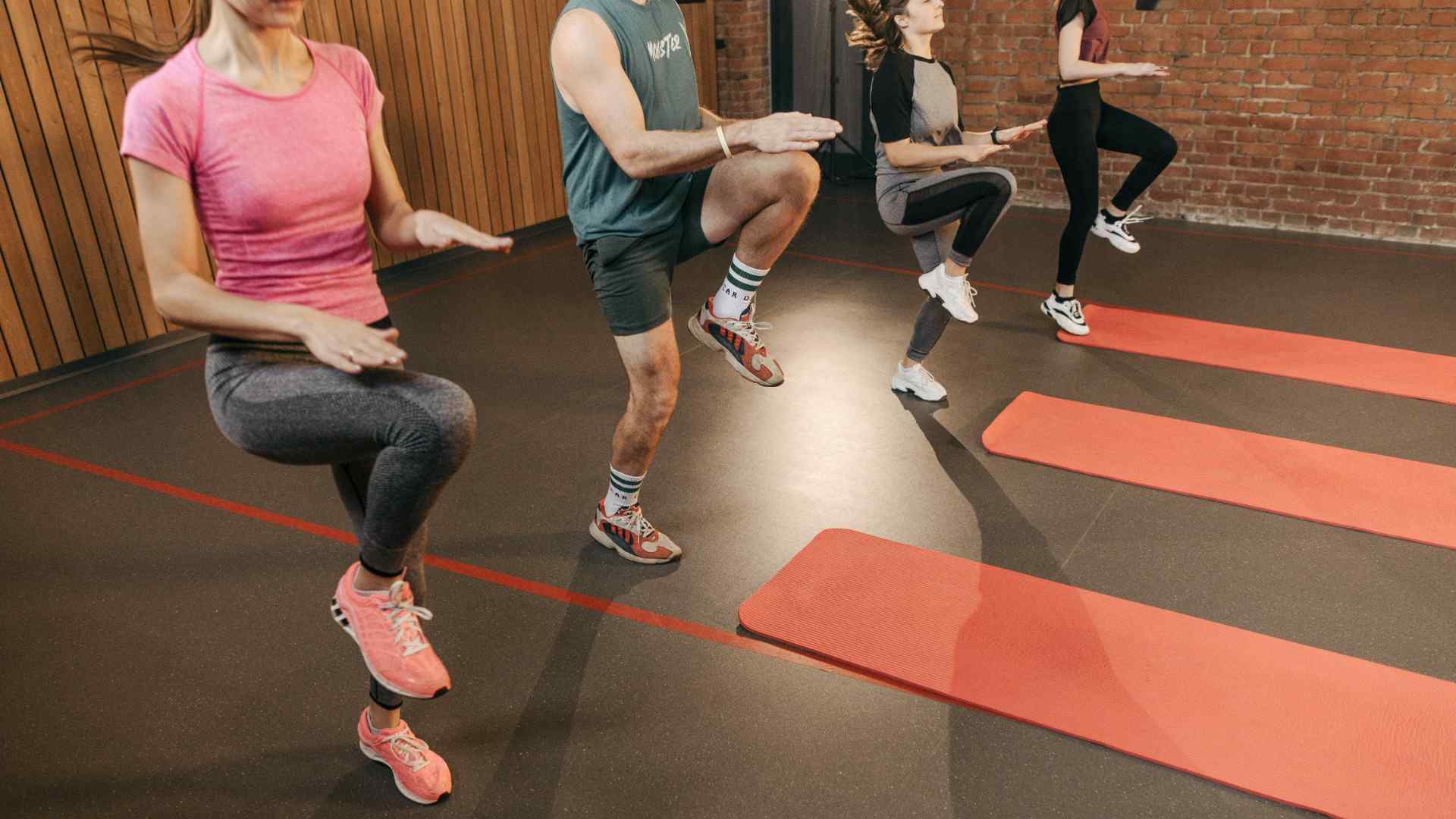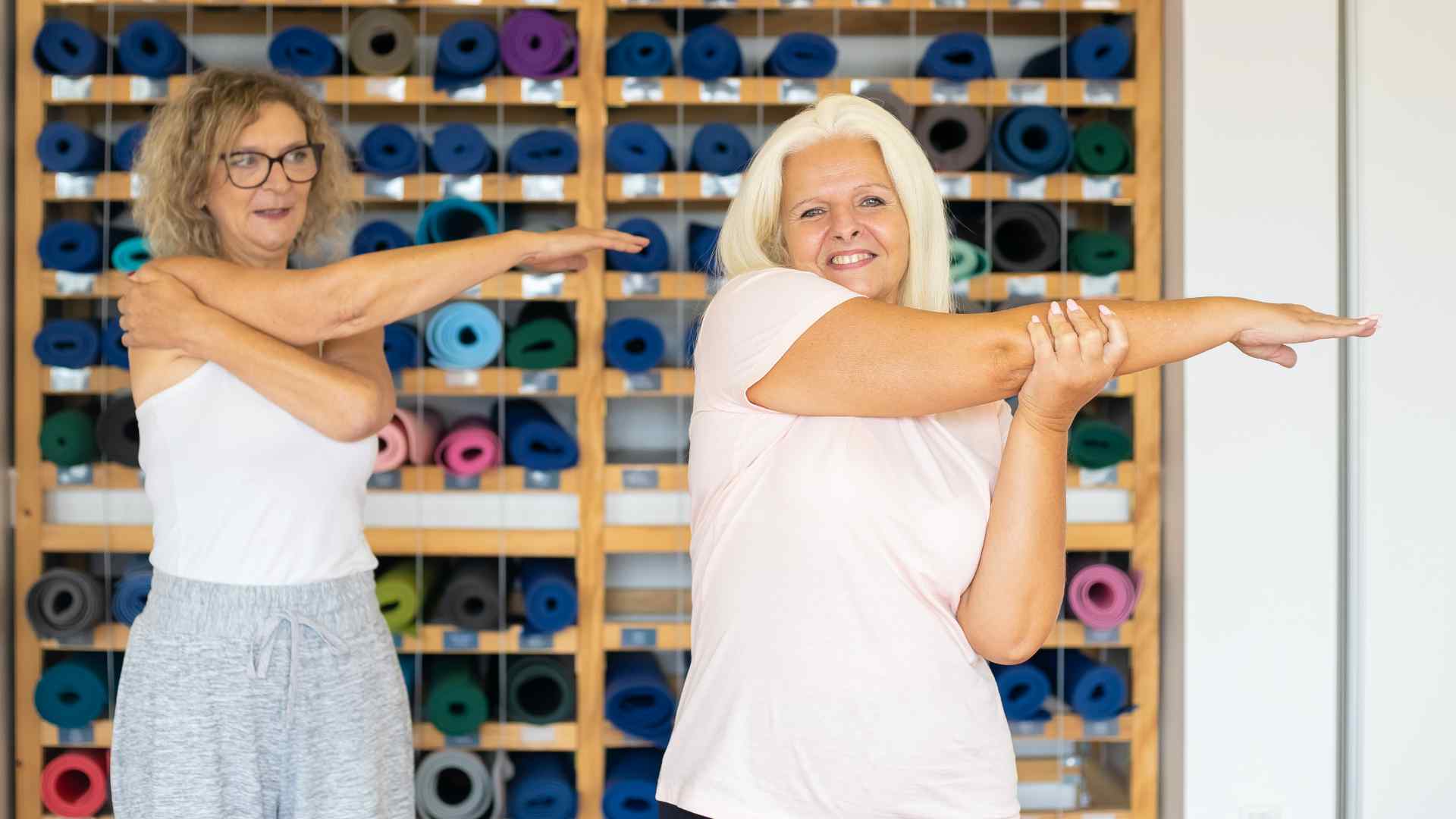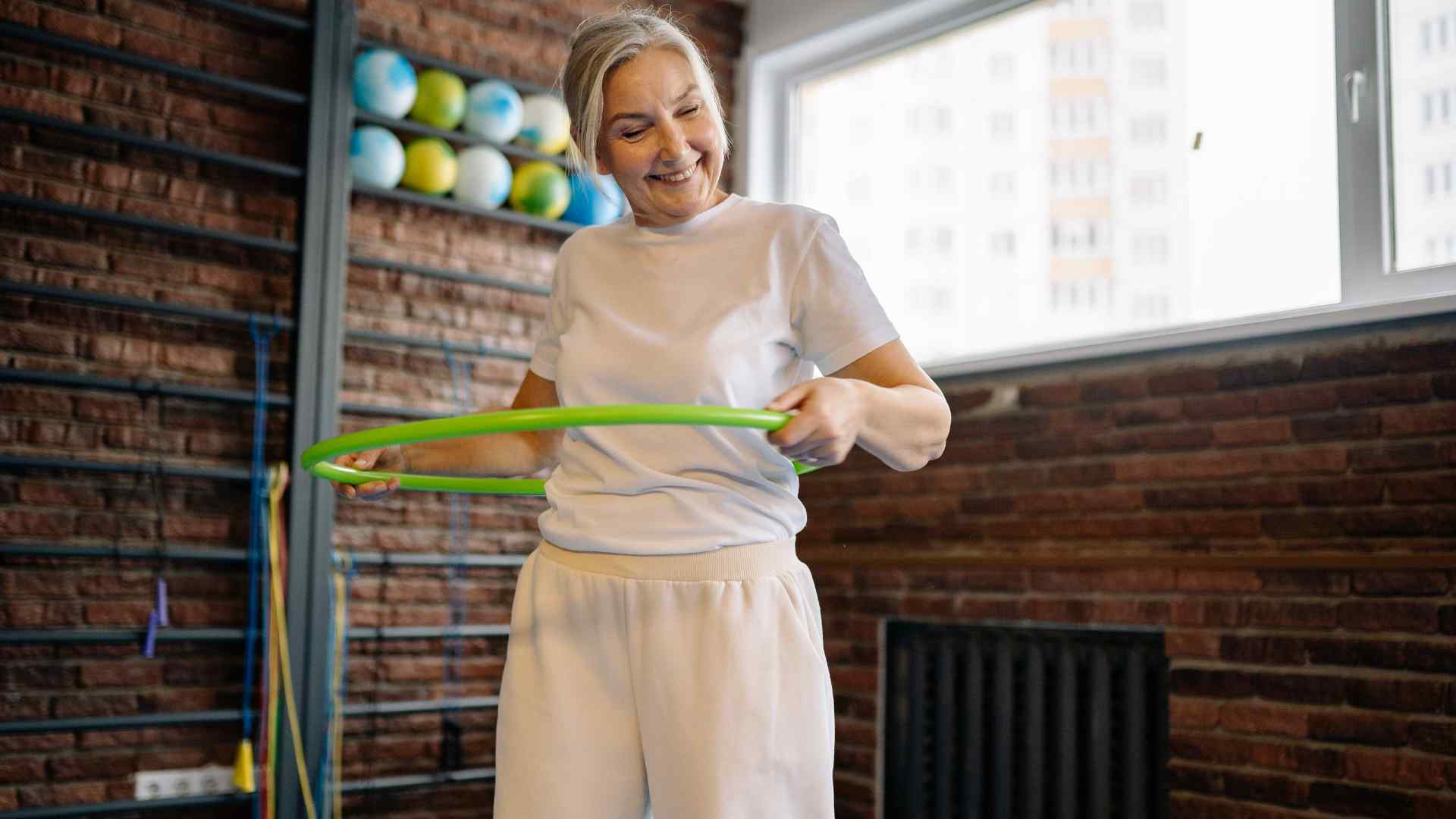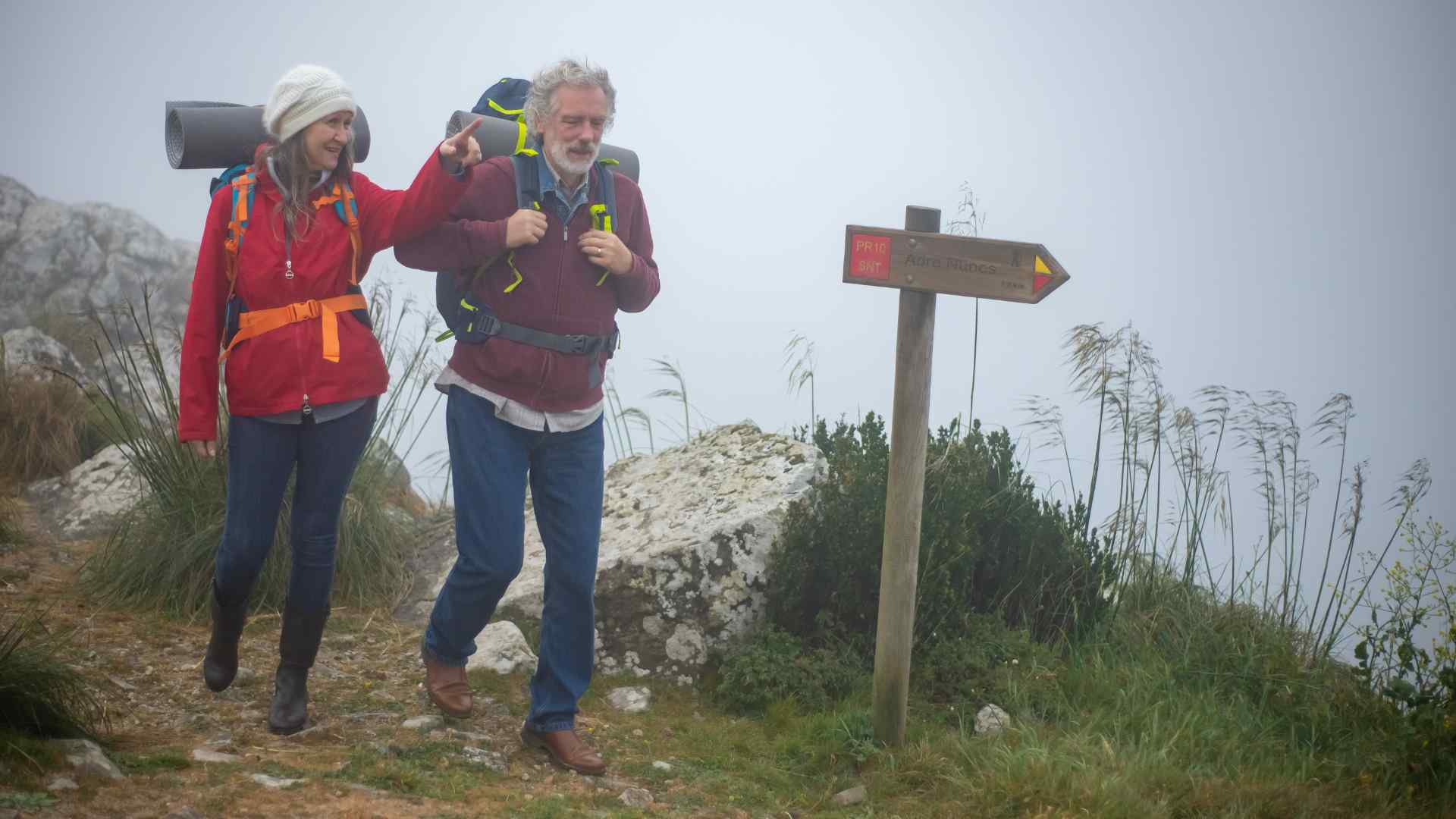
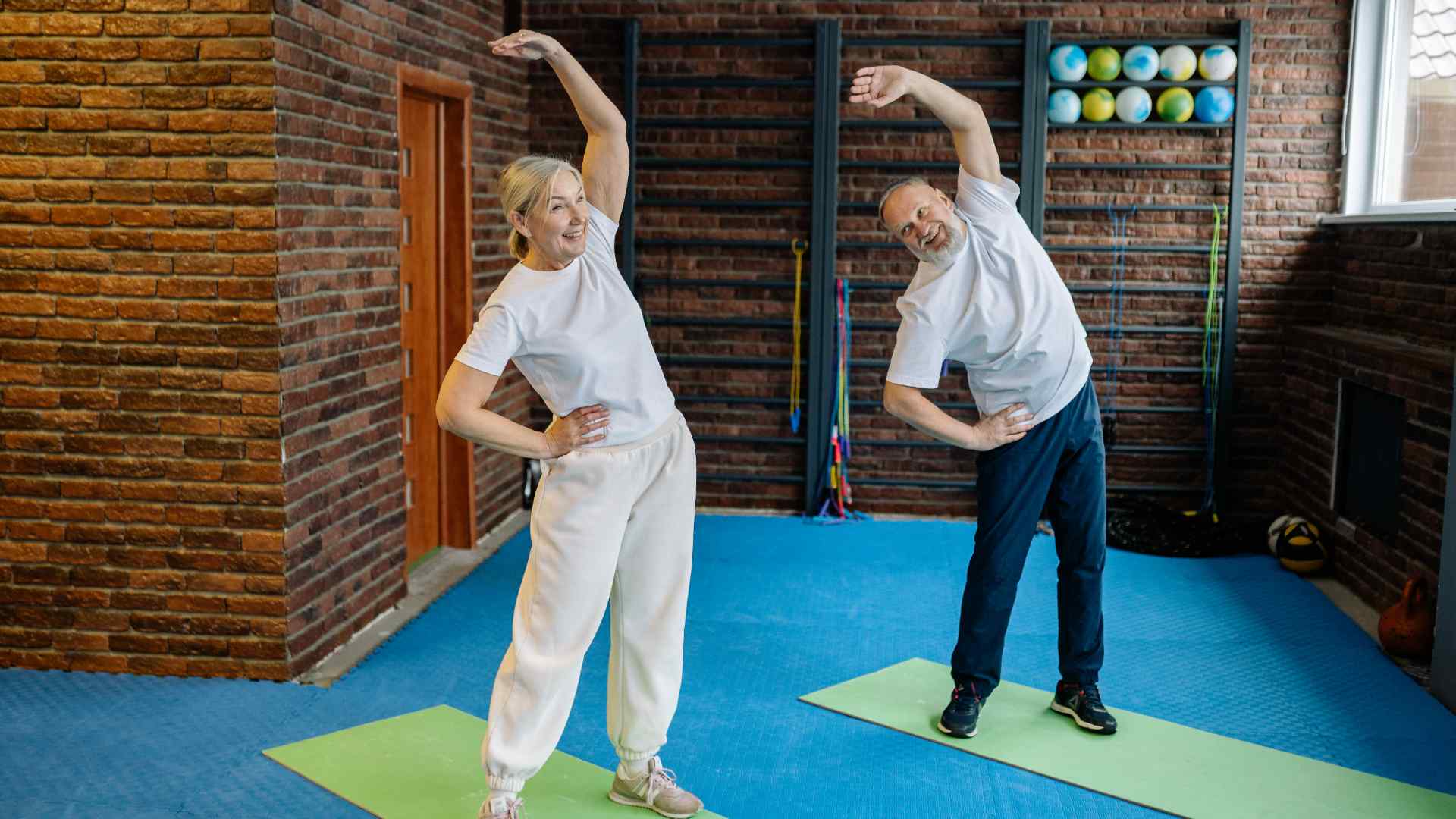
Beechcroft’s recently commissioned survey into fitness in retirement revealed that over 63% of people over the age of 55 engage in some kind of sports or fitness activities on a regular basis. Amongst those aged 55-64, almost 76% of people reporting participating, between the ages of 65 and 74, the figure falls to just over 62% and for those 75 and over, it is still an impressive 60%.
The most popular activity was walking – followed by swimming, sailing, tennis, golf and cycling with bowls becoming more popular with the older age groups. In terms of fitness or gym-based classes, weights remain popular in all age groups along with Pilates and Yoga, Stretch and Tone, dance-fitness such as Zumba and fitness classes including ‘legs, bums and tums.’
The results confirm what Beechcroft expected – that we become less involved in fitness activities as we age – although the figure of 60% of people surveyed still participating in fitness activities after the age of 70 is impressive.
We should, however, keep exercising for as long as we can.
A recent review, published in the Scandinavian Journal of Medicine & Science in Sports, found that physically active older adults experience healthier ageing trajectories, better quality of life, and improved cognitive functioning.
Certainly, physically active older adults have a lower risk of ‘functional limitations’ than their less active counterparts. Functional limitations can affect your ability to perform self-care tasks such as dressing, washing and personal hygiene and can affect your ability to cook, clean and remain independent.
There’s a multitude of other reasons for keeping fit in older age: a few of these are listed below:
Regular physical exercise helps prevent disease such as heart disease and diabetes. Exercise also improves overall immune function which is important as we age because our immune systems are often compromised. Even light exercise, such as walking, is important in preventing disease.
Load bearing exercise such as running, dancing and aerobics, where you bear your own weight helps increase bone density and reduces the risk of osteoporosis (brittle bones).
Physical exercise helps increase your metabolic rate, burning more calories and thus helping you control your weight – excess weight can cause a range of problems including the onset of diabetes.
Regular exercise helps decrease the risk of falls in older age. Older adults are at a higher risk of falls. By improving strength and flexibility, exercise helps improve balance and co-ordination.
Exercise, particularly group exercise classes to music where you learn and practise routines such as aerobics or dance-fitness or sports such as badminton, tennis and golf help improve cognitive function. Countless studies suggest a lower risk of dementia for physically active individuals regardless of the age at which you start exercising.
Whether you join a walking group or go to a fitness class, exercise can be a wonderful way to socialise with other people. Social engagement is important for us as we age and are more susceptible to feelings of loneliness. If you find an exercise you love, you’ll have something in common with other members of the group and that’s the perfect way to start a friendship.
All of your body’s systems deteriorate with age but exercise can slow the process and help you live well and remain independent. Studies show that people who exercise into their later years are more likely to avoid certain disabilities as they age.
Regular exercise has many positive benefits for your mood and well-being. It helps improve focus and provides you with a longer attention span. Changes in the brain chemistry will also create a calmer, more positive outlook.
It’s never too late to start exercising – and even the smallest changes can bring significant results. It may seem daunting to start an exercise routine after the age of 55 and you may worry that you aren’t in good enough shape to start but there’s a wonderful range of classes and activities and some very helpful fitness instructors, many of whom specialise in exercise for the over 50s (and many of them are over the age of 55 themselves!)
If you have any physical issues, it’s always wise to speak to your doctor because certain medical conditions may require your instructor to provide you with alternatives and it may be that a certain type of exercise may be best for you.
If you have osteoporosis, for example weight training is important because it can help build bone mass and slow degeneration. Weight training doesn’t necessarily mean going to the gym and lifting weights though you could use exercise bands or take part in any weight bearing exercise where you are using your body weight against gravity. Routines such as yoga and Pilates can improve strength, balance and flexibility and help you reduce the ‘sloping shoulders’ that can occur when you have osteoporosis.
Always check that your fitness instructor is qualified – so many aren’t. If anyone is running an over 50s class, they should hold level 3 qualifications for teaching ‘Special Populations’ or ‘Exercise for Older Adults’ (and this isn’t always the case). For general group exercise classes, your instructor should ideally have Level 2 Exercise to Music qualifications or the equivalent and personal trainers should also be qualified and experienced.
The NHS recommends that older adults should do some type of physical activity every day to improve health and reduce the risk of heart disease and stroke.
Adults aged 65 and over should:
There are so many venues that offer classes, some require membership but many don’t. Some gyms offer pay-as-you-go classes and some have off-peak memberships as well as full memberships – and most gyms these days cater for people of all ages and abilities.
Comfortable clothing is usually best for an exercise class – but check with the instructor if you have any doubts.
Leggings or track suit pants are usual and a loose top – many of the supermarkets sell great fitness wear – that washes and dries quickly and allows you to move. Footwear is important – good supportive trainers or dance shoes. If you intend taking dance-fitness classes, jazz trainers or dance sneakers are particularly good as they allow you to turn easily. Prices on Amazon range from around £22 for a pair though the well-known brands can be twice as much.
This is the most difficult question to answer – it all depends on what you enjoy. First of all, would you prefer:
Many fitness brands are now introducing lower impact or seated alternatives to the general classes. A good example is Zumba which has a party vibe - there’s mainstream Zumba, Zumba Gold, Zumba Step, Zumba Toning, Aqua Zumba and several more options.
These are just a few of the classes growing in popularity. Chair based exercises are ideal for improving posture and balance and are suitable for anyone with reduced mobility.
Many classes introduce resistance bands or hand weights for muscle strengthening.
Classes designed for the over 50s often have specific names such as ‘encore’ or ‘gold’ but really these type of classes are specifically planned to provide low impact alternatives and are ideal for anyone who is just starting on their fitness journey or is returning to fitness after a prolonged break.
Always let the instructor know if you have any specific problems – knees, backs or shoulders – and a good instructor will take note and offer alternatives.
There are so many good reasons that Aqua Fitness training is becoming more and more popular. Working out in the water is one of the most therapeutic activities one can take part in.
Water aerobics builds cardio, strength and resistance all while being easy on the joints and in a cool and relaxing atmosphere!
If you are fit and used to exercise, there’s no reason to go to a class specifically for the more mature.
In my experience, many people in their 60s are fitter and stronger than younger counterparts because they have more time to get fit and may have been maintaining high levels of fitness for many years.
If you are generally well but do have issues – again, with knees, shoulders or backs – let the instructor know. A good instructor always offers alternatives and options as a matter of course.
Some classes are particularly strong – indoor cycling for example and many of the Les Mills classes – ask the instructor about the level before you start.
New types of fitness classes are being developed all the time – the following list includes a few new ones to watch out for in your area and a few tried, tested and much-loved ways of getting fit.
Chichi-Fit is a fabulous, heart-warming, dance-fitness class where musicals meet fitness.
All the music is taken from West End and Broadway musicals and many of the routines are inspired by show moves. So if you fancy kicking your way, with a glittery gold hat, through the finale of ‘Chorus Line’ or working up a sweat to ‘Can’t Stop The Beat’ from ‘Hairspray’ – this is for you. Chichi-Fit classes include Chichi Encore, designed to be lower impact which is perfect if you are starting, or returning, to exercise and there’s Chichi-Chair for the less mobile. Choreography is easy to follow and with a choice of programmes there’s something for everyone from age 7 to 107. Many of the Chichi-Fit instructors are qualified fitness instructors, ex-dancers or musical theatre performers and all are very enthusiastic. This is a class where you come out feeling uplifted – and singing the songs you’ve just danced to. Take a look at the website – www.chichi-fit.co.uk for details including a class finder – but remember Chichi-Fit is relatively new in the fitness world and classes are constantly being added to the class list. (Watch out for Chichi-Fit on Dragon’s Den TV Programme at the beginning o 2023).
SOSA fitness is a class incorporating authentic dance steps from a host of dance styles including Latin, Ballroom and many more.
The easy to learn choreography, fantastic songs and soundtracks ensure this fusion of dance and fitness is a really enjoyable form of exercise. Participants don’t need any dance or fitness experience – the routines are designed with beginners in mind with adaptations for the more experienced. Whatever your age, shape or ability, you’ll be welcome at a Sosa dance-fitness class. For the less mobile, there’s Seated SOSA Dance Fitness. The website – www.sosafitness.co.uk – provides plenty of information and a class finder. There are classes in Oxford, Didcot and Bicester, St Albans and Bexhill-on-Sea, with more classes being added regularly.
This is an energetic, upbeat dance fitness class featuring all of your favourite ‘Strictly’ dances, suitable for all ages and abilities and, like the other fitness classes listed here, you don’t need a partner.
Fitsteps was born in 2013 as the result of a collaboration between two of the UK’s most famous dancers – Natalie Lowe and Ian Waite, former Strictly Come Dancing professionals who decided to take the very best of Ballroom and Latin and mix it with a fitness experience. There are so many Fitsteps classes across the country – around 263 in total – so you need to put your name and address into the class finder on www.fitsteps.co.uk to locate your nearest class. If you can’t get to class, there’s FitSteps on Demand subscription which gives you access to livestreamed classes and much more from the comfort of your own home. Fitsteps for All Bodies – or FAB is designed for those who love to dance but prefer a lighter intensity, lower impact and perhaps a slower pace. FAB combines old style dance genres such as the Bosa Nova, Foxtrot, Flamenco and Argentinian Tango with a real swing and sway feel.
Zumba is one of the best-known names in the UK fitness industry today featuring Colombian dance-exercise with international influences including Caribbean dance styles such as soca, South American dance styles such as Merengue and Samba, India’s Bollywood and even martial arts.
Over 12 million people all over the world enjoy Zumba classes every year. Zumba was created by choreographer and fitness instructor, Alberto ‘Beto’ Perez in the mid-1990s. It was the result of a ‘happy accident’ – on his way to teach aerobics, Beto realised he’d forgotten his music so improvised by using the salsa and merengue music tapes he had with him and improvised a class that mixed dance and aerobics. In 2001 he started teaching this new fitness style in Miami and working with Alberto Perlman and Alberto Aghion, created Zumba. Today, Zumba offers a whole range of classes including Aqua Zumba, Zumba Toning, Zumba Gold (lower impact) and Zumba Step. There’s a whole range of instructors – some with nationally recognised fitness qualifications and many without so do ensure you find the right instructor to meet your needs. See the website at www.zumba.com.
Wobble offers an entry point to exercise for those who would benefit from a seated exercise class. It lasts for 45 minutes and is sociable and fun, with a fabulous playlist and engaging routines.
Tai Chi is a slow and gentle exercise that is suitable for older adults, even those managing chronic conditions.
It offers the benefits of flexibility, muscle strengthening, and endurance training. Tai Chi can improve health without worsening existing impairments.
Pilates is a low impact class that works on restoring balance of the body through a series of slow and controlled exercises which promote strength, mobility and body awareness.
It focuses on improving core strength, posture, balance and co-ordination and provides a long-term feel-good factor.
Here at Beechcroft, our developments are located in and around the local amenities, meaning you're likely to have a number of fitness classes nearby should you choose to move to a Beechcroft property.
These are just a few of the local fitness classes – there are so many more and you’ll probably see classes advertised locally. We haven’t included all the classes at local leisure centres or classes without an internet presence. Please check classes and times before heading off to class. These classes and times are correct at the time of publication but we can’t guarantee they remain the same.
Relax into retirement and reduce your energy bills with a luxurious, new Beechcroft house or apartment. This really is downsizing without compromise.
Find your dream home7 April 2025
From beautiful landscapes to excellent transport links, Kent offers the best of both worlds - convenience and charm - along with…
Read more17 March 2025
Research certainly suggests that it may well be…
Read more17 February 2025
After a lifetime of hard work, retirement should be something to celebrate, a time when you’re able to do things you enjoy most…
Read more